
EGX 2017: Steel Division: Normandy 44 Preview
The world is seeing a revival of interest in World War II in recent months, following a collective respite from it in the early naughts. Sometime around 2005, the public got saturated by Call of Duty’s, Band of Brothers’, and Company of Heroes’, and everyone seemed to move in unison towards the modern conflict dominating the news; game franchises and Hollywood alike started focusing on modern warfare -- often in the Middle-East -- and for slightly over a decade, human culture shined the spotlight away from the Second World War.
Now, these days are gone. A number of B-movies and indie titles have kicked off the WWII-era once more, and the big players are following suit: Call of Duty’s return to it’s old Second World War theme can bring the conflict back into mainstream gaming, while Christopher Nolan’s Dunkirk may redefine the way war movies are made, like Saving Private Ryan once did. In the strategy genre, after years of shallow RTS combat in Company of Heroes 2 and complex strategic engagements on Hearts of Iron IV, comes Steel Division: Normandy 44.
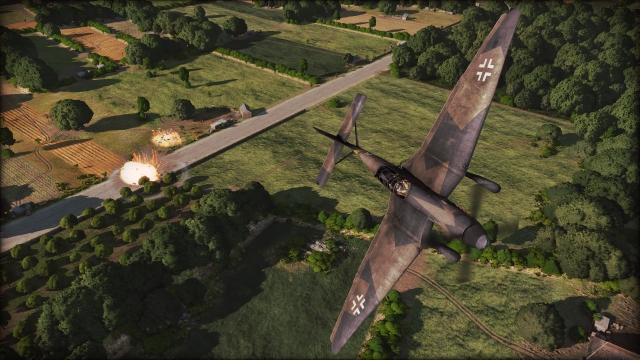
Published by Paradox Interactive and developed by Eugen Systems of Wargame fame, Steel Division is a RTS game that breaks with established norms. Unlike Dawn of War III and other StarCraft II clones, this latest WWII RTS requires strategy and tactics to succeed. In order to achieve victory, players must think on their feet and constantly adapt to enemy encounters -- clicking like an idiot will not net you victory, it will only make you tired.
Accompanied by Communication and Marketing Manager Pierre-Yves Navetat, I spent 30 scandalously short minutes with Steel Division in early April during EGX Rezzed, in London. The demo pitted my British (Scottish) 15th Infantry against the German 91. Luftlande over Pointe du Hoc, in France, where I managed to push the frontlines across roughly 50% of the map before we ran out of time and I was ushered away to my other press appointments.
During the course of my time with Steel Division, Pierre and I chatted quite a bit. Though a communications guy, he also worked in the development and seemed to know the entire game inside and out. “The game is divided into three phases, A, B, and C, which represents progressive phases of the conflict”, Navetat tells me. “Each phase has unique units and deployment force, and they get progressively stronger”. Phase A usually has lighter units, like infantry and attack airplanes, while latter phases bring the slower and heavier guns to bear, like bombers and heavy tanks. This creates an interesting dynamic that compartmentalises battles while forcing players to not lose track of their long-term strategy.
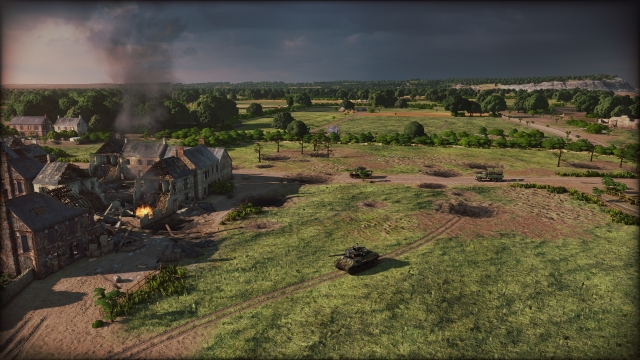
“Units that are good on Phase A get overrun in Phase B, while some units you can bring in Phase B really start to shine in Phase C, for example” says Navetat. “So you must always be aware of that, ‘what should I bring’, ‘should I bring this unit now and push or wait for phase C?’. You need to be smart and play your units well.” During my playthrough, I scrambled a number of infantry and tanks and sent them towards a little village, securing buildings along the crossroads in case of a German attack. Infantry units actually arrive via motorcars and trucks, meaning you must keep logistical requirements in mind -- trucks travel faster by road and infantry must disembark before engaging properly, creating an extra layer of strategy. Sending an infantry to the middle of a forest will take longer than an open field.
Once my units were in position in the village, Pierre kept assisting me with tips on what to do next, due to our short play session. As I called artillery vehicles into the map, my forces came under attack. This is where Steel Division started to shine for me: with no German units within range of my scouts, I had to pinpoint the enemy’s location based on angle of fire and sound. After observing a couple of salvos, I marked an area for my Spitfire to perform a fly-by and do some recon. The plane quickly flew out from the outskirts of the map and into the main battle, circling above the area I marked until the enemy could be located. Once spotted, the Spitfire automatically began an air-to-ground assault, attacking the enemy’s formation and taking out their main artillery in the process. With proper intel to act on, I sent in my tanks and started to take out the German forces.
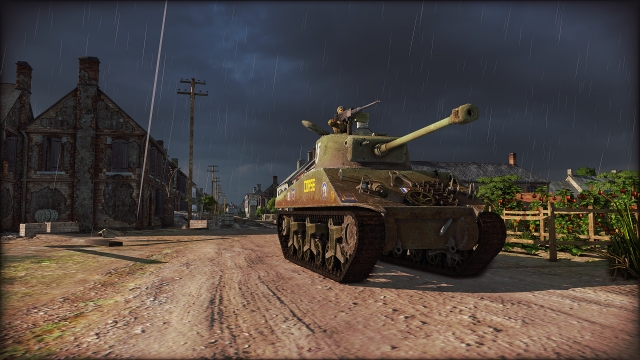
The operational areas are beautiful, being based around real maps, photos, and satellite data to accurately recreate the area of engagement. The units, divisions, and commanders are all part of real historical battlegroups, lending an extra air of authenticity to the proceedings. Ordering a sustained artillery barrage on an enemy position feels much better when you know it's proper context.
The game focuses on being realistic and fun via a myriad of systems at play at all times. Infantry units get stressed and shatter, vehicles suffer mechanical problems upon being shot, and the line of battle constantly adapts in real time as you push and retreat through the terrain. At the start of the match, I took some time talking to Pierre and learning what I had to do and lost about 20% of the map, with a clear spike in the central battlefront where the Germans were pushing forward. Once I ordered an artillery strike on that area, the AI adapted and started to push the left flank, which I then engaged and caused them to retreat. As they fell back and I moved forward, the battlefront line adjusted accordingly in real-time. It’s a neat little system.
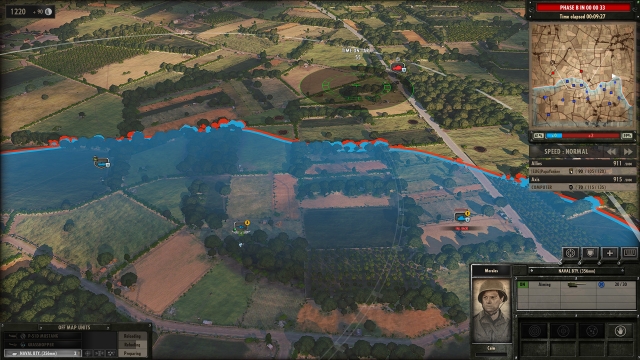
But perhaps the most interesting interactions came between actual units. During an armoured vehicle engagement, one of my tanks got hit in quick succession by heavy guns. The tank didn’t explode in seconds as it’s usual of every other RTS game -- instead the concussion force of the blasts knocked out the tank driver. As the main gun rotated and returned fire, a little countdown message above the unit tickled over the remaining seconds until the driver regained consciousness. Seeing an unresponsive and stationary vehicle, I sent my other tanks around it to cover the perimeter and held the Germans back, until the driver got back into the fray and joined the rest of the offensive. The armoured division sprang forward and mopped up the Nazi forces, breaking their tanks engines, disabling their main guns, and rupturing their threads. It was an awesome, dynamic battle system that felt incredibly versatile.
Unfortunately, that’s where my time ran out. I had a shitload of Paradox games to cover, and unfortunately couldn’t spend much more time with Steel Division, but what I experienced got me severely excited for what may come. Taking out anti-armour guns and infantry entrenchments, exploding vehicles, and calling in airstrikes feels absurdly satisfying, since the moment to moment gameplay revolves around tactics and strategy instead of simply clicking to give an attack order. Units feel fragile yet resilient enough to feel real, simulating what actual warfare usually was. If you’re looking for a World War II game that’s tactical and better than Company of Heroes while being less abstract than Hearts of Iron, Steel Division is the game you’re looking for.
Steel Division: Normandy 44 is out on 23rd May 2017 for PC. You can read more about it here.

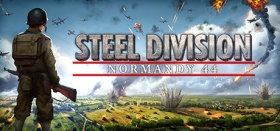







COMMENTS